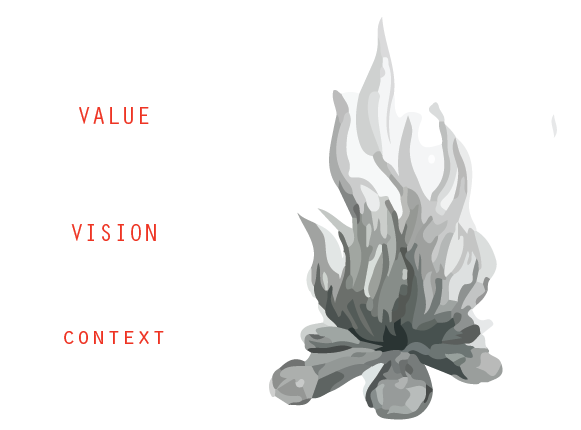
Our environments inside and outside co-evolve continuously. Ancient traditions have acknowledged the inner and outer journeys and their experiences are well documented. Not only human beings but also plants, animals, microbes, entire ecosystems learn and adapt to their environments. Scientists too have recognized this ability of every form of life, and life itself to ‘find a way’. Thus change is a process and not a goal, and life tries to better itself at every opportunity. In a natural environment, learning is continuous and it is by being and not by doing.
PREPARING THE INSTRUMENTS OF LEARNING
“We mold clay into a pot, but it is the emptiness inside that makes the vessel useful.”
— Lao Tzu
We perceive the world with our senses of feeling, seeing, tasting, smelling and hearing, as well as through our mind. The mind helps filter what we perceive making meaning depending on what we already know. The mind also works independent of these senses and we call its perceptions intuitions, premonitions and so on.
Opening our senses and our mind (the sixth sense in eastern traditions) is the first step in receiving knowledge without biases. Developing awareness and observation skills for the outside and the inside is an important step in this process. The role of education is really to help one learn well from his/her own experiences, for which the instruments of learning need to be prepared.
DESIGN
The word design has evolved from the middle French desseign which links it to meanings like purpose and project. The meaning of Design has evolved over many decades and today there are many ways to talk about design. But essentially, Design is an outline or a plan to realise a certain vision. This means that design is intentional.
One of the most powerful designs that human beings came up with was probably a million years ago when our ancestors discovered how to make fire. By making fire, they broke the limitations of day and night, had a weapon against the predators and could cook the food outside their bodies releasing many nutrients that until now were unavailable, transforming the way human beings lived, grew and evolved. Without fire, the world we live in today wouldn’t have been possible.
Interestingly, the fire itself is a great metaphor to understand design, as explained by the great design philosopher, MP Ranjan.
Fire is a process of transformation which is deeply connected to its fuel, the context. The transformation of the material also releases light and heat which creates value for the community. Fire represents the foundations of the design process- the existence within a context, a vision for transformation, and the creation of value for the community (social and ecological).

Design is the ability to constantly evolve our response based on the changing context. The process of design is also a process of learning about our environment and ourselves. Design education can help visualize the incremental process of change and design tools can help articulate problems and visions.
The understanding of design in today’s world is important for professionals, academicians, artists, thinkers in both urban and rural contexts.
ETHICS AND VALUES
A design process needs to be qualified with foundational ethics based on which the design manifests. Along the process, the decisions are taken keeping these values in mind. A community design process, for example, will only work if it upholds the ethics of the community. Also, communities can learn and work together only when they have common values and ethics. Ethics are invisible and often unwritten. Recognizing and articulating these ethics is also a very important part of the process of design. Ethics are beyond the choice of religion or spiritual practice. In fact, ethics are the glue that can bind diverse communities.
DIMENSIONS OF LIFE
Human beings are born with and create during their lives, relationships with other people and their environment. Besides the relationships with the world outside, we are also related to ourselves with the world inside. A healthy community sustains itself on its relationships with self, others and the ecology. We call these the dimensions of human life. The ethics of a holistic design process should address all these dimensions.

Our paradigm of education is the paradigm of learning, about ourselves, our communities and our environment. The learning happens when we accept change as life itself and free our bodies and mind to observe, imagine and express.
